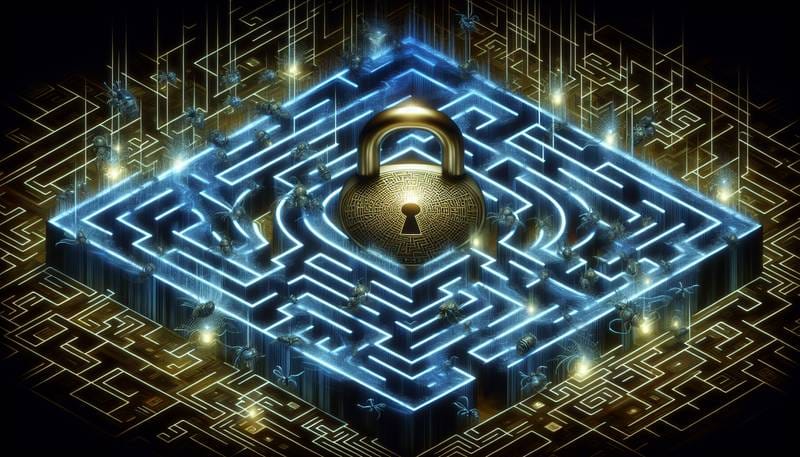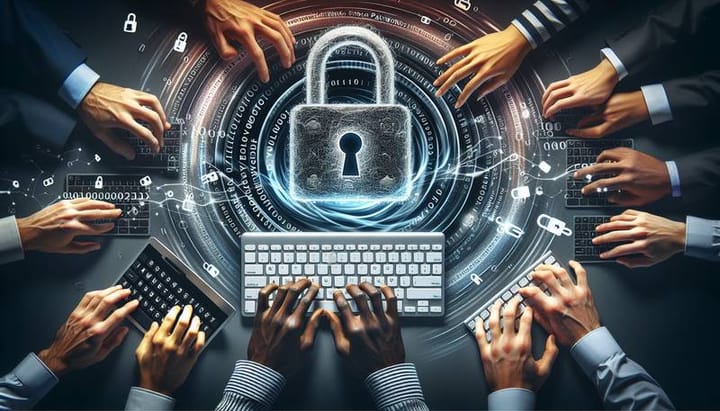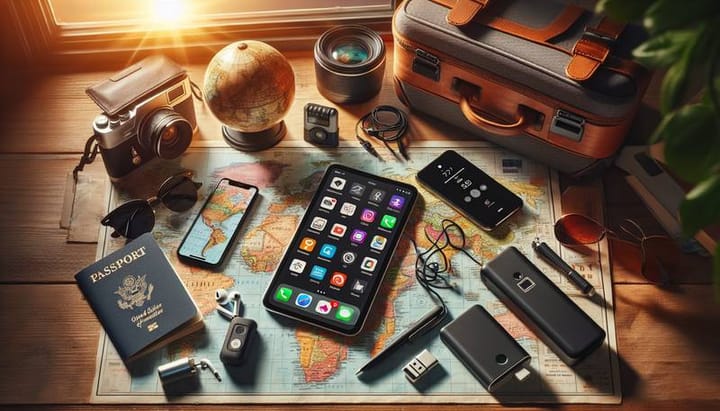How to Secure Your Digital Life: A Step-by-Step Guide

Welcome to our complete guide on how to safeguard your digital life against the myriad of threats lurking in the vast expanse of the internet. In this technology-driven era, our connections, entertainment, shopping, and even aspects of our identity hinge upon the digital world. But with great convenience comes great risk. Cyber threats have morphed from mere annoyances into formidable foes that can unravel your digital and real-life persona in just a few clicks. This guide is here to equip you with the necessary armor to protect your personal cyber citadel. We promise not only to keep it informative but also to sprinkle some entertainment in the mix – after all, security doesn't have to be a snooze-fest. So, get ready to embark on a digital security journey that will leave you feeling empowered and cyber-savvy!
Why You Should Care About Digital Security
In the early days of the internet, digital security was a phrase that rarely cropped up in conversation. It was a simpler time when the 'wild west' of the web felt adventurous and slightly rebellious. Fast forward a couple of decades, and the landscape is drastically different. Now, digital security breaches are as common as the latest trend going viral on social media. Every day, voluminous amounts of personal data are traded across the internet, making privacy and security a prime commodity. Hackers are perpetually sharpening their digital swords, devising new ways to infiltrate your privacy shields. They hunger for personal data, banking details, and login credentials. A single breach can lead to identity theft, financial loss, and in serious cases, legal troubles. But fear not. By understanding the risks and taking proactive steps to fortify your digital life, you can significantly lower the chances of becoming a cyber victim. It's not just about protecting yourself; it's about shielding your loved ones too. Kids, parents, and the less tech-savvy among us are equally exposed and often make for easy targets. That's why taking digital security seriously should be a collective effort. You're not just doing this for you – you're doing it for your whole clan. Let's break down some fundamental steps to embolden your digital defenses and keep the cyber barbarians at bay.
Strong Passwords: Your First Line of Defense
Think of your passwords as the mystical incantations that lock away your treasure – your personal data. A strong password is like an enchanted barrier; it keeps your data secure from trolls (read: hackers) that lurk in the vast forests of the internet. But what exactly constitutes a strong password, you ask? A robust password is like a good burger – the more layers, the better. First, it should be lengthy – at least 12 characters, though some security maestros recommend 16 or more! Just like burgers benefit from varied ingredients, passwords should be a complex mix of uppercase and lowercase letters, numbers, and special characters. Watch out for common substitutions (think "pa$$w0rd" – hackers are onto that trick). And please, oh please, avoid using easily guessable passwords like "123456" or "password" (yes, people still use these – and hackers thank them). Don't use your pet's name, your birth date, or anything a cyber ne'er-do-well could easily pluck from your social media profiles. Remember, just like you wouldn't use the same key for your car, house, and safety deposit box, don't reuse passwords. If one site gets breached, you don't want all your digital doors flung wide open! Now, managing a bunch of unique, complex passwords may sound like keeping a herd of cats – near impossible. Enter stage left: password managers. These tools are like having a loyal squire to keep your arcane knowledge (passwords) in one secure, encrypted place, requiring you to remember only one master password. Nowadays, many browsers even come with built-in password management tools, though standalone managers often offer more powerful features.Here's a titillating tidbit: using phrases or strings of unrelated words can make your passwords easier to remember but still hard to crack. Think 'UnicornGlitterRainbowDash' or 'ChocolateThunderStormChaser'. It adds a bit of fun and personality to the otherwise mundanity of password creation.
The Magic of Two-Factor Authentication
While powerful passwords are crucial, they are but a single element of a robust defense strategy. Enter the majestic guardian known as two-factor authentication (2FA). If passwords are the locked doors, 2FA is the moat filled with crocodiles surrounding your castle. Two-factor authentication is a two-step verification process that adds an extra layer of security to your accounts, ensuring that even if your password is compromised, your account remains fortified. It works by requiring a second form of identification – usually something you have, such as your phone. After entering your password (something you know), you'll be prompted to enter a unique code sent via SMS, email, or an authentication app (something you have). It's like the bouncer at the club door – without that VIP pass (the second code), there's no getting in.The magic of 2FA lies in its simplicity for the user and complexity for the intruder. Even if a cybercriminal gets their grubby digital hands on your password, they'll hit a wall without the second factor. And while SMS verification is the most common, it is not the most secure. Savvy folks might opt for authentication apps like Google Authenticator or Authy, which generate time-based codes that are far more difficult for hackers to intercept.Here's the entertaining bit: think of setting up 2FA like learning a secret handshake to get into a secret society. It's a simple move (just a few taps on your phone), but it grants you access to an exclusive club – the club of Cyber-Secure Individuals. Welcome, you're now one of us, and your online life just got a whole lot safer.
Phishing: Don't Take the Bait
Imagine a tranquil lake where you're leisurely casting lines, waiting for a bite. This is precisely what phishing looks like, except you're the fish, and cybercriminals are the fishers. Phishing attempts are fraudulent efforts to reel you in by masquerading as legitimate requests for your sensitive information. They're the old "wolf in sheep's clothing" adage brought to digital life.These scams can take many forms: emails, phone calls, texts, or even social media messages. Typically, they entice or scare you into revealing personal details, such as bank account numbers, passwords, or Social Security numbers. They might seem credible – with convincing logos, official-sounding language, and even a sense of urgency (like a claim that your account is about to be closed unless you act fast).But fret not! By learning to recognize the telltale signs, you can avoid taking the bait. Look out for messages with poor grammar and spelling, or ones that use generic greetings such as "Dear Customer" instead of your actual name. Be suspicious of any unexpected requests for personal information or money transfers. When in doubt, don't click on any links or download attachments from suspicious emails. You wouldn't accept candy from a stranger; don't accept dubious links from an unfamiliar email.Here's where it gets a bit cheeky. If you suspect a phishing attempt, troll the trolls by forwarding the email to the Anti-Phishing Working Group at reportphishing@apwg.org or report it to the Federal Trade Commission. You can take the wind out of their malevolent sails and protect others in the process. It's like being a digital superhero, cape and all.
Keeping Your Devices Safe and Sound
Your devices are like the doors to your home in the digital neighborhood. And just like you'd lock your home against intruders, you need to safeguard your devices from virtual trespassers. These unwanted guests come in the form of malware and viruses, which can wreak havoc if they breach the thresholds of your electronic domiciles.The initial step in device defense is to install reputable antivirus software. Think of it as hiring a burly guard who stands watch 24/7, ever-vigilant against cyber-thieves. This guardian doesn't just deter intruders; it actively seeks out potential weaknesses and patches them up, much like fixing a broken fence or a rickety door before a storm.Next, ensure your operating system and all software are up to date. Software updates aren't just about getting the latest shiny features; they often include vital security updates that repair vulnerabilities, making it harder for cybercriminals to break through. Picture it as reinforcing your digital fortress with stronger walls after each update.Let's not forget about the simplest yet often neglected act: locking your device with a PIN, password, or biometric lock. While this may seem like a no-brainer, an alarming number of folks leave their devices unprotected. It's akin to leaving your front door wide open with a neon "Come on in!" sign. Secure that lock!And for that extra peace-of-mind layer, consider encrypting your data. Encryption transforms your data into unintelligible code that, even if accessed by unauthorized entities, remains an indecipherable puzzle without the unique decryption key. Encryption is like speaking in a secret language that only you and trusted parties understand.To add a little flavor to this section, let's consider device security as setting up traps and illusions in a mystifying maze. Hackers and malware wander like lost mice, unable to find the cheese (your precious data), eventually giving up and scurrying away.
Surfing the Web Safely
The internet is a vast ocean, and while it has many treasures, it also harbors pirates and treacherous tides. Thus, safe web surfing is crucial to avoid getting shipwrecked on digital reefs. The right tools and knowledge serve as your compass and map through these waters.First, consider using a Virtual Private Network (VPN). A VPN extends a private network across the public one, encrypting your data and hiding your IP address. This not only makes your online activities more private but also prevents hackers from identifying and targeting your digital ship. It's like sailing under a flag of invisibility, effectively ghosting any unsavory characters lurking in the cyber seas.Additionally, being selective about what Wi-Fi networks you connect to can make or break your online security. Unsecured public Wi-Fi is a hacker's playground, ripe for eavesdropping on your data exchange. If you must use public Wi-Fi, ensure your VPN is active, and avoid performing sensitive activities, such as online banking. It's akin to avoiding shady back alleys in an unfamiliar town.Then there are browser extensions focused on security, such as ones that block trackers and malicious ads, giving you safer passage through the web. And while on the topic of browsers, using secure browsers that prioritize privacy can be the trusted vessel you need for navigating the internet. And for those who revel in the lighter side of life, treat safe web surfing like an adventure game. Each secure decision and action earns you points, enhancing your defense stats and bringing you closer to the treasure of uninterrupted, risk-free internet joy.
Backup: Your Safety Net
Remember when you used to save your progress in video games, providing you a point to return to if you met an untimely end? Well, backups are the real-world equivalent for your digital life. They are your safety net, ensuring that whatever happens – be it a cyber-attack, device failure, or an accidental coffee spill over your laptop – your precious data is not lost forever.Regularly backing up important files is like storing your valuables in a safe. Various methods exist, from external hard drives to cloud storage services, each with their own pros and cons. The best approach is often a combination of different methods, known as the 3-2-1 backup rule: keep at least three copies of your data, on two different media, with one being offsite.When backing up to external drives, keep them disconnected from your devices when not in use. This ensures they remain untouched should a virus or ransomware attack occur. And with cloud services, encrypt your data to add an extra security layer.Don't see backups as a chore – make a ritual out of it. Perhaps every Sunday evening, as you wind down with a favorite beverage and some tunes, you let your files sync to the cloud or an external drive. It's a moment of calm, knowing that whatever the digital world throws at you, your data is safely tucked away.
In wrapping up this guide to securing your digital life, remember that staying safe online isn't a one-time deal – it's an ongoing journey that evolves with the changing tides of technology. By adhering to the practices detailed above, adopting good habits, and staying informed about the latest threats, you're not just setting up defenses; you're cultivating a resilient, secure digital existence. From passwords to backups, web surfing to device protection, each step you take is a building block in your personal castle of cyber security.Embrace the process. Revel in the empowerment it brings. Know that with each security layer you add, you become more untouchable in the eyes of those who wish to harm your digital wellbeing. And most importantly, don't be afraid to seek out new knowledge, ask for help, or share what you've learned with others. After all, the more secure each individual's digital life is, the safer we all become.Go forth, intrepid internet users, and may your digital journeys be both thrilling and secure!


